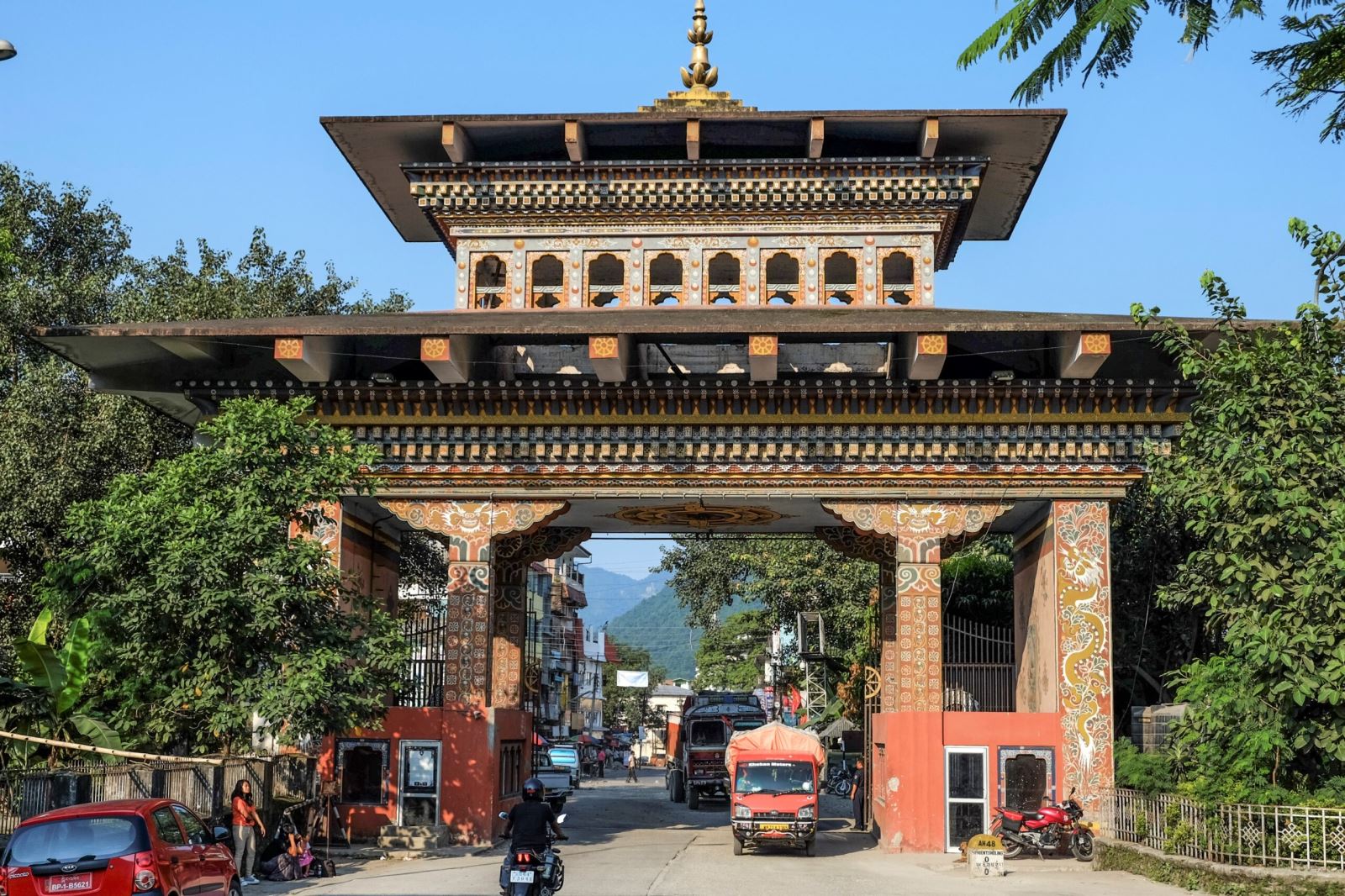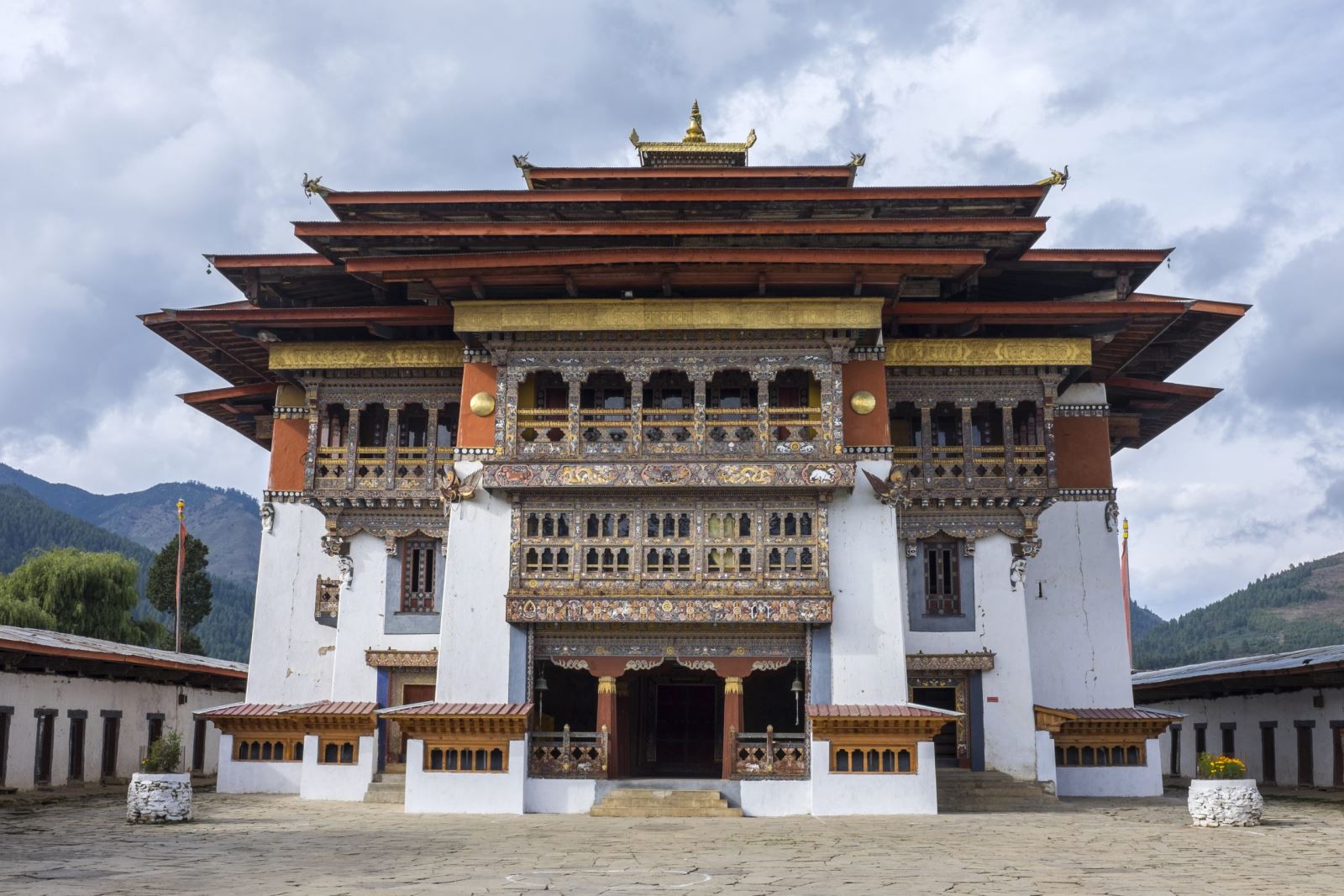Bhutan, the happiest country in the world, is home to monasteries perched on the mountainside amidst breathtaking nature, hidden in the mist hanging in the sky, vast pine forests or endless fields in harvest season. Bhutan is the dream of any Buddhist because it is the destination of Vajrayana Buddhism. The imprint of Buddhism and the origin of Tibetan religion can be seen from anywhere in Bhutan.
The government is concerned about the negative impacts that tourism has on the balance and ecosystem, and the indigenous culture of the country, so Bhutan is a country that sets very strict requirements for foreign tourists. Tourist visas are only issued upon request by travel companies licensed by the government, and the length of stay in Bhutan is only granted during the tour time that has been arranged and paid in advance. For tours to Bhutan, the government sets a minimum price of 200 USD/person/day for all costs.

When traveling to Bhutan, the beautiful scenery and peace are definitely what make visitors amazed. The best time to travel to Bhutan is in the spring from March to May and in the fall from September to November. These are the two most beautiful seasons of the year in Bhutan with mild weather, warm sunshine and fresh air.
Spring is a great time to see flowers blooming and explore traditional festivals. Meanwhile, fall is the ideal time for trekking and exploring nature. The weather is cool and pleasant, very suitable for outdoor activities. You can freely explore the winding trails, admire the golden forests and enjoy the fresh air of the mountains.
However, if you want to save money, visitors can consider coming to Bhutan in the winter from December to February or in the summer from June to August. Winter in Bhutan is quite cold, especially in the high mountains. However, the winter landscape has its own beauty with snow-capped mountains. Summer is quite hot and humid but it is also the low season so prices will be cheaper.

Best places to visit in Bhutan
Capital Thimphu
Starting with a bang, we introduce Bhutan's capital, Thimphu, in western Bhutan. Capital cities are not always popular with tourists, but Thimphu is a destination you cannot miss. The government building itself, Tashichho Dzong, is impressive at first sight. Explore the city, surrounded by mountains, walking down narrow streets lined with traditional Bhutanese buildings. Check out the giant golden statue of Buddha Shakyamuni perched on a hill. Watch the sunset here, then head down to Mojo Park to meet the karaoke baristas who come at night. Of course, we would be remiss if we didn’t mention the life-changing hiking opportunities around Thimphu.
Paro
Just over an hour from Thimphu, you’ll land in Paro, one of Bhutan’s most popular destinations, as it’s the base for a stopover to the Tiger’s Nest Monastery. This iconic hillside religious structure often gets the spotlight, but there are plenty of other places to visit in Paro. A 16th-century dzong sits just outside Paro, and you can then explore the Paro market and the unique area of 108 monasteries built next to it. You’ll be arriving in Paro anyway, as it’s home to the country’s only international airport, which is a tricky landing given the runway is nestled in the Himalayas.
Punakha
Northeast of the capital, you’ll enter a lush, green valley filled with dzongs and natural vistas. A highlight among the surrounding areas is Khamsum Yulley, an ornate Buddhist monastery with small stupas set along tall grasses above the breathtaking Punakha Valley. Or, take a 10-hour hike into the wilderness to the hot springs of Gasa Tsachu—a great respite from the long journey. Punakha itself is the confluence of two major rivers, and a 17th-century fortress still dominates much of the town.
Phrumsengla National Park
Bhutan is protective of its land, so it won’t surprise you to learn that there are several national parks. Phrumsengla National Park boasts some of the most spectacular sunsets over its mountain peaks and rhododendron-filled fields if you visit between April and June. The pristine landscape will steal your heart as you enter, and your love will grow stronger as you explore the cliffs and stumble upon a majestic waterfall. The area is vast and you can do five-day treks and still not reach the other side. For hikers and mountaineers, include Phrumsengla National Park in your itinerary.
Dzong Monastery in Bhutan
Dzong Monastery in Bhutan
Eastern Bhutan
Traveling to eastern Bhutan is no easy feat, and since it’s so difficult to get to, you can only imagine the pristine wonders that await. Few people live in this wild region, so as you venture into the small villages, you’ll inevitably see more plants and animals than people. You’ll likely stay in Trashigang, a stop on the trade routes between neighboring countries and a rustic town surrounded by natural wonders. The nearby Bumdeling Wildlife Sanctuary is home to majestic animals, including red pandas, leopards, tigers, and is a hotspot for butterfly life. While in eastern Bhutan, you can venture to Bhutan’s oldest town near the Indian border, Samdrup Jongkhar, a blend of Indian, Tibetan, and Bhutanese cultures. Bhutan already feels off the beaten track, but eastern Bhutan takes things a few steps further.
Trongsa Dzong
Right in the heart of Bhutan, you’ll find Trongsa, a charming town with a huge dzong complex that draws visitors for its peaceful atmosphere and vast scale. Trongsa Dzong is the largest fortress in Bhutan, strategically located overlooking a gorge and the Mangde River. Like all dzongs, it houses monks and also serves as the seat of the district administration. It’s no surprise that it’s on the tentative list for UNESCO World Heritage status. Visiting this special place will make you feel like you’re on top and at the center of the entire universe. Moments of meditation will come easily here.
Phobjikha Valley
If you head east from Thimphu, you’ll pass through the Phobjikha Valley, which is well worth an afternoon, if not a day, stop. This stunning alpine wetland is an octagonal glacial valley surrounded by the Black Mountains to the east. Several pleasant trails meander through the area, where you’re sure to see black-necked cranes perching and feeding. These birds are revered in Bhutan, so be respectful of them and their habitat (in fact, you could go to jail if you disturb them. Check out these fun facts about Bhutan below). Mingle with the locals while you’re in the area, enjoy some yak butter tea, and enjoy the tranquility that pervades Bhutan. As you continue east, you’ll stop at Wangdue Phodrang, a city built at the beautiful confluence of the Punak Tsang and Dang rivers. Here you’ll find one of the largest dzongs in the country.
Jigme Dorji National Park
One of the largest national parks in Bhutan, a visit here will be a feast for your eyes and soul. It is filled with dramatic panoramic views of glacial lakes, glaciers, snow-capped mountains and wildflowers such as blue poppies, rhododendrons and orchids. You can easily spend a few days here exploring the trails leading to hot springs, the best bird watching spots and ideal picnic spots. There is no place to stay inside the park, but ask your tour operator to find accommodation nearby as Jigme Dorji National Park is a must-see destination in Bhutan.
Bhutan Tour 2025 with Hanoi Green Tour with a variety of attractive tours, you will be free to choose the departure point Hanoi or Ho Chi Minh. You will experience a new culture, famous resorts in this beautiful country. Bhutan tours are organized regularly every month of 2025 with competitive prices and top quality, high visa success rate, high-class service.... In particular, the company has preferential policies for tourists who register for the earliest Bhutan package tour or register to travel in groups.

